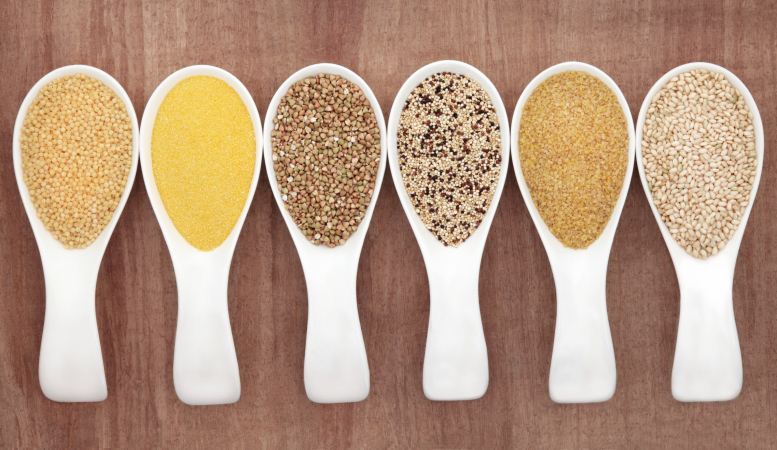- Typical regional food is now a global world-class cuisine trend and Latin American flavors are coveted in several markets
- Restaurant owners, chefs and tour operators can also profit from this market niche
EXPORTS
Regional food is trending high: an opportunity for Latin America
The trend in regional food is expanding and Latin American cuisine is not the exception. Regional producers can benefit from this opportunity by exporting traditional food to previously unexpected markets.

HIGHLIGHTS
Latin American producers of typical regional food such as quinoa, yuca, queso blanco or dulce de leche traditionally believed that their markets were limited to the population acquainted with eating these products. Who was to ever think of convincing a Frenchman to buy quinoa or an American to try an alfajor?
Fortunately, typical regional food is now a global cuisine trend and Latin American flavors are coveted in several markets, representing an important opportunity for food exporters in the region.
Latin American cuisine goes worldwide
Miguel Aguilar, a well-known chef in Miami, mentions in an interview on Voxxi website that Latin American cuisine is today what French cuisine was some decades ago: “Ten years ago French food was in,” he said. “Then it got boring and people had to find new ways to make it more interesting.”
In the same line, an article on QSR magazine affirms that there are a myriad of innovative gastronomical options available including Asian, Latin, South American and Mediterranean cuisine. However, “while there are good cases to be made for each, it seems that the big trend behind all of them is Americans’ growing desire for new, exciting, and bold flavors, no matter their cultural origin.”
“Consumers have come to expect fresh and exciting new flavors and South America has all that to offer”
In any case, the success of the region’s flavors in the most important market of the continent is undeniable: “Latin food is here to stay” affirms Aguilar. “With the overpopulation of Latinos throughout the country it’s only going to get bigger and better.”
But not only in the United States are Latin American flavors becoming the norm. In 2012, for instance, four Latin cuisine restaurants opened in a trendy Hong Kong neighborhood called Lan Kwai Fong. Harcha Bhaskar and Anil Chandhok, director and food importer respectively, mention that even in India “there is a cereal called quinoa from South America, which is known as the healthiest food to date that is entering the Indian market. It has a healthy amount of manganese, which no other daily food has.”
Meanwhile, in the United Kingdom, Steffan Cosser, food innovator expert, explains on a web interview with FoodManufacture.co.uk that “a new food trend that is slowly but firmly making its way across the Atlantic is South American, specifically Brazilian and Peruvian.” According to Cosser, “consumers have come to expect fresh and exciting new flavors and South America has all that to offer.” He also mentions that the big global events that are to take place in the region in the next few years (FIFA Soccer World Cup in 2014 and Olympic Games in 2016) will fuel demand for South American cuisine even further.
An opportunity for SMEs in Latin America and the Caribbean
In this context, small producers in Latin America and the Caribbean who trade their products in local markets that are accustomed to these flavors now have the possibility of exporting to previously unthinkable markets.
In this regard, it is necessary to learn what is happening in places that are setting trends and about the flavors that today are considered the most representative of regional food. Steffan Cosser explains that currently in the United Kingdom the most important Latin American foods are “quinoa, tomatillos, purple corn, aromatic chiles and tiger’s milk.” For Marian Blazes, another subject-matter expert, classical Latin American food and ingredients include:
- Corn (maiz, choclo), “cultivated in South America for more than 5,000 years, possibly South America’s biggest food contribution to the rest of the world.”
- Potatoes, the most important direct rivals of corn, are raw material to thousands of dishes around the world.
- Peppers, mainly used as condiment.
- Tropical fruit, exclusive to the region.
- Queso blanco or queso fresco.
- Yuca, a very popular plant these days in North America.
But the opportunity not only ends in exporting the food itself. The owners of small restaurants offering traditional cuisine can also export the know-how of their establishments or even open branches in other countries.
Latin American chefs can also export their services by designing menus for trendy restaurants or even set up in other countries to cook typical regional food. Even local tour operators can create cuisine tours and take visitors to try the flavors that their countries of origin find so attractive.
KEYWORDS


Follow Us